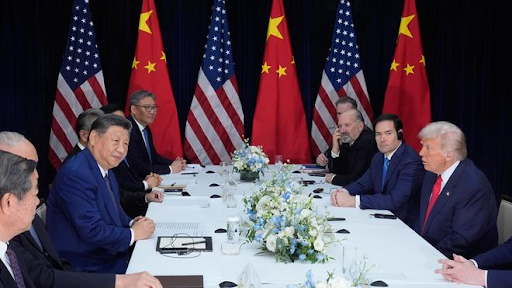Description

Copyright infringement not intended
Picture Courtesy: https://indianexpress.com/article/explained/explained-sci-tech/explained-global-legally-binding-ai-treaty-9551874/
Context:
Ten countries, including the United States, the European Union and the United Kingdom, have signed a legally binding framework to address Artificial intelligence (AI) impact on human rights and democratic values.
Why this treaty?
- Artificial intelligence technology is growing rapidly and slowly becoming a part of normal life, it presents both opportunities and risks.
- The advancement of artificial intelligence technology also raised serious concerns about the ethical values, potential misuse, and unintended consequences of AI systems.
Objectives of the Treaty
- To establish a universal framework for the regulation and monitoring of AI technologies.
- To ensure that AI systems are developed and used in such a way that is ethical, safe and beneficial to society.
- To address challenges that no single country can manage alone as AI technologies are borderless.
-
- A unified global treaty will address the concerns around AI-based surveillance, Privacy violations and autonomous weapons.
The treaty was signed by:
- Andorra
- Georgia
- Iceland
- Norway
- Republic of Moldova
- San Marino
- United Kingdom
- Israel
- United States of America
- European Union
|
Key Highlights of the Treaty
- The Treaty adopted a risk-based approach.
-
- The regulation of AI will be proportionate to the risk associated with its use.
- A careful balance between the potential use of AI and at the same time mitigating harmful potential misuse.
- The treaty applies to both the public and private sector AI systems.
-
- It holds members of the treaty to be accountable for ensuring that AI systems do not produce harmful or discriminatory outcomes.
- The treaty is designed to be applicable across different countries, providing a unified standard for AI regulation at the global level.
- Signatories have to ensure that their AI systems uphold human rights, including protecting privacy and equal rights.
-
- AI systems must not degrade democratic institutions or processes.
- AI systems must respect judicial independence and ensure fair outcomes for public debate.
- Victims of AI-related rights violations must have access to legal remedies.
- The treaty has exempted National security, research and development.
- After signing the Treaty, the members must ratify it to implement the legally binding provisions of this Treaty in their jurisdictions.
Concern
- The main concern around creating a global AI treaty is achieving a consensus among nations with different political and strategic priorities.
- Different countries have different levels of technological advancement, regulatory frameworks and ethical standards.
- Effective implementation of the provisions under the treaty across different countries can be challenging.
-
- There is a need for clear guidelines on how to adopt the provisions of the treaty at the local level while maintaining international standards.
- Artificial intelligence (AI) technology is rapidly evolving and the treaty must be flexible enough to adjust the future development and unforeseen challenges.
Way Forward
The treaty is an important step in the direction of regulating AI at the global level, it aims to balance technological development with human rights. However, the success of this Treaty will depend on its effective implementation and the ability of the regulatory framework to keep pace with rapid technological advancement.
Must Read Articles:
Artificial Intelligence Preparedness Index (AIPI)
AI Regulation Across The World
Sovereign Artificial Intelligence
Artificial General Intelligence
Source:
Indian Express
Diginomica

|
PRACTICE QUESTION
Q. Critically Analyse the potential strengths of the new international AI treaty in safeguarding human rights and democracy. How does the treaty aim to address issues related to privacy, discrimination, and accountability in AI systems?
|









